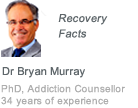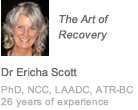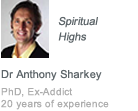Oxycontin Addiction
Oxycontin addiction has been growing at a pace over the last 20 years and this is largely due to over prescription of the drug – it has only become popular as a drug of abuse in the last few years. Oxycontin is a painkiller concocted from another of the opium derivatives, thebaine, and has actually been around in one form or another for nearly 100 years. Famously, actor Corey Haim is suspected to have died of oxycontin overdose.
The origins of Oxycontin, it’s use, abuse and legal status
Oxycontin is the trade name for the Purdue Pharmaceuticals version of the drug Oxycodone which was first developed in 1916 in Germany as one of a number of semi-synthetic opioids that it was hoped would replace the existing painkillers and analgesics. It was already recognized that drugs such as morphine, codeine and diacetylmorphine (heroin) were addictive and had lasting side effects, so the new drugs were intended to be less harmful to the person receiving treatment. It was prescribed for low to medium pain relief and in low doses was also used to combat diahorrea. Administered orally Oxycontin is a time-release capsule formulation of Oxycodone.
Oxycodone was first introduced to America in 1939, use has grown rapidly and in the late 1990s approx 11 – 12 tons were manufactured worldwide. Use of Oxycontin escalated in the first decade of this millennium and by 2007 the worldwide manufacture of the drug was approximately 75 tons. The United States market accounts for over 80% of the usage of the drug and there are more people suffering with an Oxycodone or Oxycontin addiction here than in than the rest of the world combined.
Illegal use of Oxycontin began to be noted in the late 1990s and considerable illicit activity was found in the rural areas of the United States where it was commonly known as ‘Hillbilly Heroin’. Put together a combination of over-prescribing, fraudulent prescriptions and an explosion of abuse and the result has been that Oxycontin is now the drug of choice for Oxycontin addiction victims because of the greater concentration of Oxycodone found in the time-release capsules than most other formulations.
In many parts of the United States Oxycontin is frequently prescribed to seniors and elderly females complaining of general aches and pains or sleeplessness. It is not unusual for these people to supplement their meager incomes by selling either the prescription or the drug.
The labels on the Oxycontin capsules instructed the users not to crush the tablets because of the potential for rapid release of the active drug. Naturally, those with an Oxycontin addiction crush the tablets and either sniff or inject the resulting powdered drug.
Once addicted to Oxycontin it is believed that many addicts turn to heroin as a cheaper alternative and so fuel the continuing epidemic in heroin addiction.
Oxycodone is a controlled drug worldwide and the penalties for misuse are severe:
- In the United States the drug is listed as a Schedule II drug meaning that it is considered to have a high potential for abuse but that it has a currently accepted medicinal use with severe restrictions
- In the UK it is a class A drug which aligns it with heroin and crack cocaine and possession without a prescription is punishable with up to 7 years in prison
- In Singapore the penalty for unauthorized manufacture attracts a minimum sentence of ten years and 5 strokes of the cane , up to a maximum sentence of 30 years imprisonment and 15 strokes of the cane. The penalties for trafficking are slightly less at 5 years minimum and 20 years maximum
- Other countries have different penalties but worldwide ii is a heavily controlled drug with harsh penalties for misuse
Oxycontin addiction: usage and effects
Oxycontin is a tablet designed for slow release of the active oxycodone drug but it is abused in three ways:
- Orally – an addict will swallow the tablets in order to stave off the withdrawal effects of the drug but still leave them able to function normally
- Inhalation – by crushing the tablets the drug can be inhaled or snorted, giving a rapid onset of the same symptomatic high as heroin or morphine – euphoria and a numbing of the pain receptors
- Intravenous injection – crushed tablets are dissolved in water and injected and as the drug is directly injected into a vein, the effects are instantaneous
Some of the side-effects of Oxycontin abuse are the target that the addict is aiming for, feeling euphoric, a numb sensation ‘as though the body is wrapped in a warm blanket’ and faintness or light-headedness. However other side-effects are less welcome:
- Nausea and vomiting
- Convulsions
- Confusion and staggering
- Constipation
- Itching and sweating
Profile of an Oxycontin addict
The majority of Oxycontin users have no problems with their use of the drug but there are some who have developed an addiction to the drug through over-prescription or through an extended period of use due to severe injury or chronic and persistent pain. There are many abusers and addicts in the more rural areas of the US – Appalachia, Kentucky, Pennsylvania – where the drug is commonly used recreationally. Oxycontin is commonly abused in indigent and low-income areas of the inner cities, with addicts generally using stolen prescriptions and stolen drugs
Treating Oxycontin addicts
The withdrawal effects of Oxycontin are very similar to those of morphine or heroin:
- Cramps and muscle spasms
- Sweating and yawning uncontrollably
- Raised bumps on the skin (the cold-turkey syndrome)
- Diahorrea
- Runny nose and weeping eyes
- Depression and self-hatred
Withdrawal can take anywhere from a matter of days to two weeks and during this period the addict will need constant supervision to avoid self-harm and to manage the worst effects of withdrawal from the physical addiction.
Post physical withdrawal an Oxycontin addict will then need an extended period of counseling, therapies and support to enable them to regain their personality and begin the task of long-term recovery. As the addiction and abuse will have had a debilitating effect on the addict beneficial exercise regimes coupled with other treatments such as yoga, acupressure and meditation will be of benefit to the recovering addict. While other management of chronic and persistent pain will need to be put in place for those who were originally prescribed Oxycontin for the relief of that pain.












